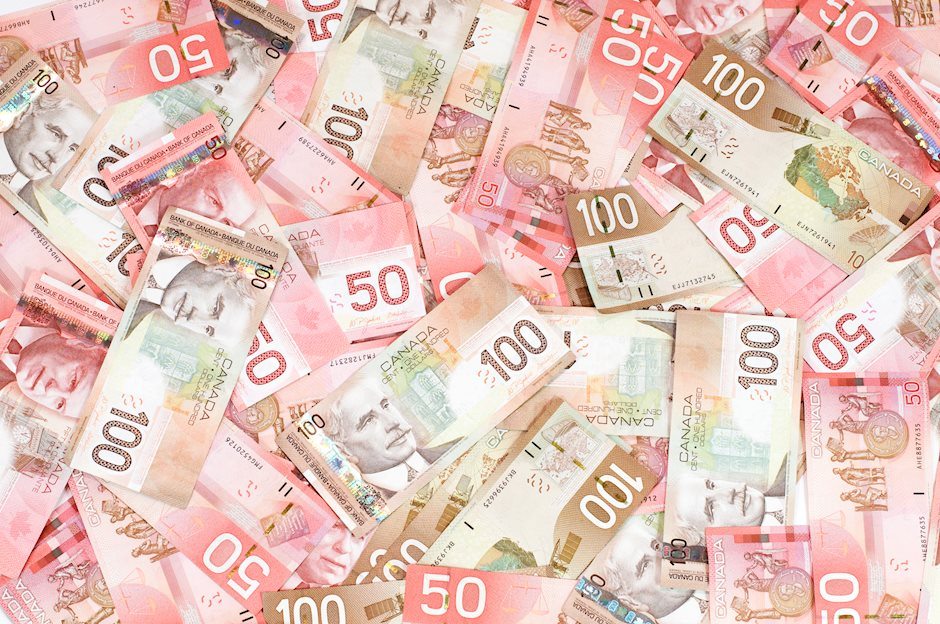USD/CAD falls toward 1.3600 due to higher Oil prices
- USD/CAD edges lower as the commodity-linked CAD finds support from higher Oil prices.
- WTI price appreciates as cooling US inflation data has raised speculation of a Fed rate cut in September.
- Chicago Fed President Austan Goolsbee stated that the US economy appears to be on track to achieve 2% inflation.

USD/CAD retraces its gains from the previous session, trading around 1.3620 during the European hours on Friday. The commodity-linked Canadian Dollar (CAD) finds support from the higher crude Oil prices, given the fact Canada is the biggest Oil exporter to the United States (US).
West Texas Intermediate (WTI) Oil price extends its winning streak for the third session, trading around $82.20 per barrel at the time of writing. Crude Oil prices received support as softer-than-expected US Consumer Price Index (CPI) data for June has raised speculation of a potential Federal Reserve (Fed) rate cut in September. Lower borrowing costs support the US economy, the largest Oil consumer in the world, which in turn boosts crude Oil demand.
In June, the US Consumer Price Index (CPI) decreased by 0.1% month-over-month, reaching its lowest level in over three years. The core CPI, which excludes volatile food and energy prices, rose by 3.3% year-over-year, compared to May's increase of 3.4%, matching expectations. Meanwhile, the core CPI increased by 0.1% MoM, below the expected and prior rise of 0.2%.
On policy front, Federal Reserve Bank of Chicago President Austan Goolsbee said on Thursday that the US economy appears to be on track to achieve 2% inflation. This suggests Goolsbee is gaining confidence that the time for cutting interest rates may soon be approaching. He also stated "My view is, this is what the path to 2% looks like," according to Reuters.
In Canada, the Unemployment Rate increased to 6.4% in June, the highest since January 2022, with the economy losing 1,400 jobs. This has heightened the likelihood of the Bank of Canada (BoC) implementing further interest rate cuts to boost economic growth. Consequently, the yield on Canadian 10-year government bond dropped to about 3.4%, reflecting dovish expectations from the BoC.
Traders await the Michigan Consumer Sentiment Index and US Producer Price Index (PPI) data, due on Friday, to gain further impetus on the US economy. On Loonie’s front, May’s Building Permits (MoM) will be eyed.
Canadian Dollar FAQs
The key factors driving the Canadian Dollar (CAD) are the level of interest rates set by the Bank of Canada (BoC), the price of Oil, Canada’s largest export, the health of its economy, inflation and the Trade Balance, which is the difference between the value of Canada’s exports versus its imports. Other factors include market sentiment – whether investors are taking on more risky assets (risk-on) or seeking safe-havens (risk-off) – with risk-on being CAD-positive. As its largest trading partner, the health of the US economy is also a key factor influencing the Canadian Dollar.
The Bank of Canada (BoC) has a significant influence on the Canadian Dollar by setting the level of interest rates that banks can lend to one another. This influences the level of interest rates for everyone. The main goal of the BoC is to maintain inflation at 1-3% by adjusting interest rates up or down. Relatively higher interest rates tend to be positive for the CAD. The Bank of Canada can also use quantitative easing and tightening to influence credit conditions, with the former CAD-negative and the latter CAD-positive.
The price of Oil is a key factor impacting the value of the Canadian Dollar. Petroleum is Canada’s biggest export, so Oil price tends to have an immediate impact on the CAD value. Generally, if Oil price rises CAD also goes up, as aggregate demand for the currency increases. The opposite is the case if the price of Oil falls. Higher Oil prices also tend to result in a greater likelihood of a positive Trade Balance, which is also supportive of the CAD.
While inflation had always traditionally been thought of as a negative factor for a currency since it lowers the value of money, the opposite has actually been the case in modern times with the relaxation of cross-border capital controls. Higher inflation tends to lead central banks to put up interest rates which attracts more capital inflows from global investors seeking a lucrative place to keep their money. This increases demand for the local currency, which in Canada’s case is the Canadian Dollar.
Macroeconomic data releases gauge the health of the economy and can have an impact on the Canadian Dollar. Indicators such as GDP, Manufacturing and Services PMIs, employment, and consumer sentiment surveys can all influence the direction of the CAD. A strong economy is good for the Canadian Dollar. Not only does it attract more foreign investment but it may encourage the Bank of Canada to put up interest rates, leading to a stronger currency. If economic data is weak, however, the CAD is likely to fall.
Author

Akhtar Faruqui
FXStreet
Akhtar Faruqui is a Forex Analyst based in New Delhi, India. With a keen eye for market trends and a passion for dissecting complex financial dynamics, he is dedicated to delivering accurate and insightful Forex news and analysis.

















